|
This problem is based on a real scenario and is presented for a "Skull Session" discussion in the Technical Large Animal Emergency Rescue Facebook Group.
Location
The incident has occurred in a small Nevada town in which wild (feral) horses roam.
Date and Time
Mid March on a weekday morning.
Incident Details
You receive a call from a resident that a mare in one of the local wild (feral) horse bands has a coffee can stuck onto her foot, that it had been that way for a couple of days, it wasn't coming off, and it was starting to cut into her short pastern. The caller said that she was able to lure the mare and part of her band into her small arena.
Upon arrival you find three horses in a pipe panel arena, one being the mare with the can on her hoof. There is no safe way to knock the can off as it is wedged snugly onto her hoof. The stallion and the remainder of the band are watching close by.
You have available a transport trailer, portable chute panels and the use of a vetting squeeze in the next county that is suitable for containing non-domestic, non-tame horses.
This is a wild horse that cannot be haltered, led or handled.
No other resources are available for this incident.
The mare on your arrival.
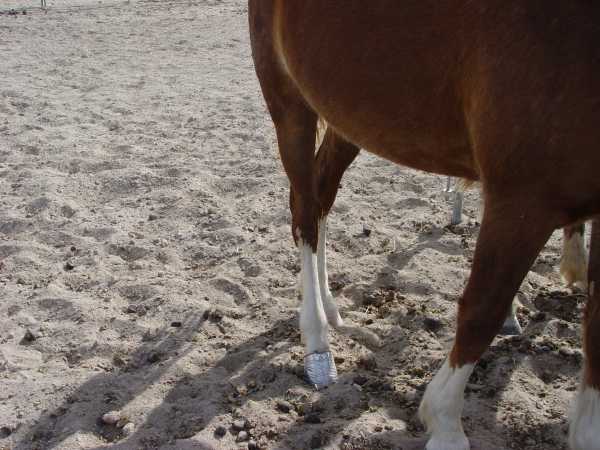
Close-up of the can.
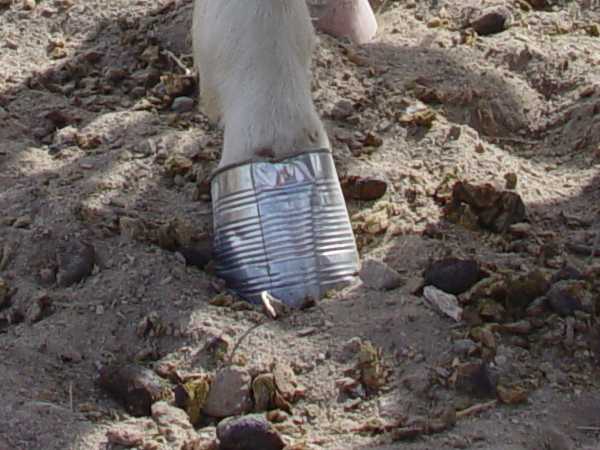
Skull Session Questions
- What are your priorities?
- What are the safety issues?
- What resources do you need?
- Describe your action plan.
Group Feedback.
The group was asked to present comments based on the members' locally available resources, so the proposed solutions varied according to what the members would have had available to them.
The collection of over 20 comments and ideas was very good. Comments of a similar nature have been combined on this solution page.
One key point involved initial observations upon arrival. Is the stuck can an emergency or is this a relatively stable condition that permits a more thoughtful planning process?
Three horses are in the corral. What are their temperaments and stress levels? Are the two "extra" horses mature or are one or both of them foals or dependent youngsters? Such information would be predictors of behavior if the horses were separated and would be factors in deciding whether to take the single horse with the can versus taking all of them.
A really solid suggestion involved before doing anything specific, observe the can and determine if it would likely wear off on its own or would cause damage if not removed. We sometimes forget that some conditions can resolve on their own.
Safety issues were a key topic of discussion. Aside from the interaction of the horses between themselves, how do they appear to interact with people? How much experience do the responders have in handling and loading feral horses? Those observations would be factors in deciding whether to go into the corral to load the subject horse or work from the outside.
Some suggestions were made relative to darting. Our experience has been that darting poses an extreme and avoidable risk when applied to feral horses. These horses can suddenly show a burst of incredibly violent physical strength when held down to administer an IV sedative. I've seen some wild horses that have been given double and triple doses of IV sedative simply get up and walk away, albeit like a drunken sailor. If you can't get a feral horse properly sedated and it tries to get up while hobbled, you could have a nightmare on your hands.
(While I'm not suggesting that darts don't have their place, as a rule it is safer to confine a coherent feral horse and administer IV sedation via the juggler vein.)
Rescuer safety was naturally a great concern. Proper attire, gloves and 100% use of helmets are no-brainers.
We regularly go into confined spaces with feral horses, but we've done it hundreds of times and we're constantly reading the horses' body language when we are "sharing" a confined space. We also won't do it if there is anyone (or another horse) close by who is excited and inserting energy into the situation by shouting, reacting, or in the case of the horse, whinnying and running around.
With the above being said, if you don't have a crew experienced in close contact work and you can't control the "energy" being produced in and around the scene, you're best off keeping some separation between the rescuers and the horse(s), even if it's just construction netting.
It was pointed out that the can could be sharp and very dangerous if someone made a mistake and the horse took a swipe with the hoof stuck in the can. Great observation.
Getting the subject horse into some kind of a chute was offered. In our rescues, that is the approach we use nearly all of the time as it works. You need panels at least 6 feet tall and of heavy construction, and those panels must be properly secured so that the horses don't flip them.
With the chute you can either load the horse into a trailer for transport to more definitive treatment, or you might be able to properly sedate and/or treat the horse while it's inside the chute.
There was some discussion about vaccinations. These horses do have very healthy immune systems or they wouldn't be survivors, however we often do vaccinate injured horses, mainly for tetanus protection. Combination vaccines are more abundant so the horses often also get a little immune boost against equine influenza and encephalitis.
It used to be a relatively standard practice to also administer PZP temporary contraceptive to mares. PZP will typically cause the mare to not conceive during the following season and overpopulation of horses is an issue. (When temporary fertility control was applied to this herd, the mare would also be microchipped and a small "N" freezemarked onto her neck so that she could later be identified.) Unfortunately that program is no longer funded.
Once the horse was safely restrained and the can removed, the horse's hoof and pastern should be examined for any injuries and appropriate antibiotics applied.
The team consisted of two people and Rescue Trailer 3 that carries a set of 6-foot by 12-foot chute panels.
We backed the trailer up to a gate in the corral where the three horses were confined. We took one chute panel and tied it to the inside of the corral next to the hinged corner of the gate, placing it at a small angle to act as a screen into a funnel. Two other panels created a chute from the corral to the trailer.
The panels set up.
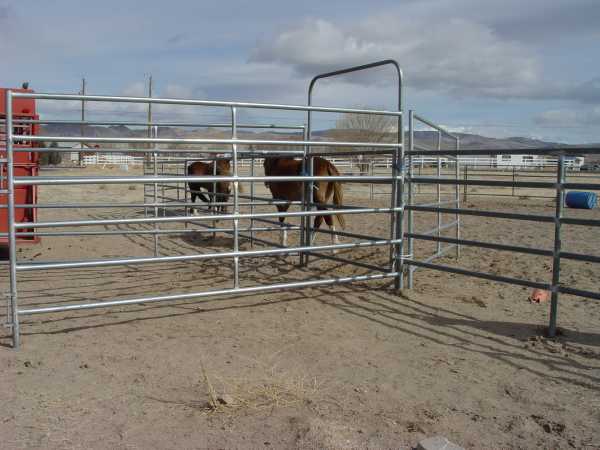
Once all the panels were secure, the corral gate was opened against the "screen" panel.
One rescuer was able to walk the horses down the side of the corral and by directing energy at the right time, haze the horses into the chute.
In this instance we got lucky. The subject mare was slower than the other two horses who quickly dashed back out of the chute into the corral. I was able to close the gate on the subject mare before she turned around.
Letting the mare figure out the loading chute dimensions.
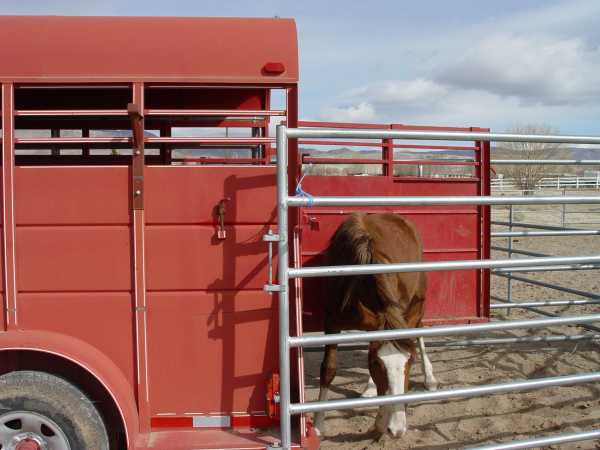
We let the mare settle for about 30 seconds to get her wits about her in the confined space, then by directing some energy while she was looking inside the trailer, she hopped right in and we closed the gate.
(Note: Trailer loading often fails when energy is applied at the incorrect time. Most horses need to check out the interior for a few seconds, then they tend to look around. Loading usually works when the "drive energy" is applied just when the horse refocuses on the interior of the trailer. This load took just under 30 seconds to accomplish.)
The entire operation so far took abut 5 minutes to set up, about 30 seconds to get the horse in the chute and about 30 seconds to get the horse loaded. Total on-scene time, about 6 minutes.
We took the horse to the Department of Corrections to get the can removed. This can was not going to come off easily and we needed to use the tilt table. Meanwhile we left the other two mares in the corral so that the stallion and his band wouldn't leave until we returned.
The mare waiting to go into the tilt table squeeze.
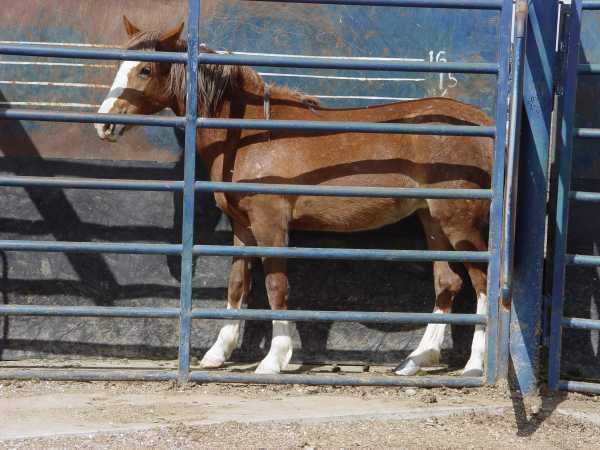
The tilt table squeeze, with lots of doors to get to different parts of the horse.
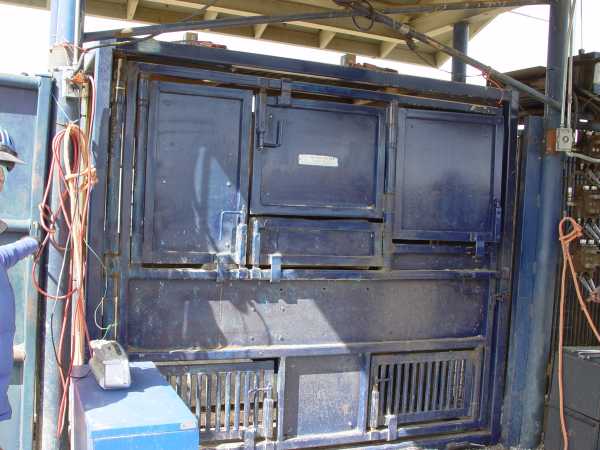
To get to her feet she had to be tilted sideways in the table. Most horses stay pretty calm when they are tilted over onto their sides. It took a bit of work with nippers and wire cutters to get the can off the mare's hoof.
Cutting away the can.
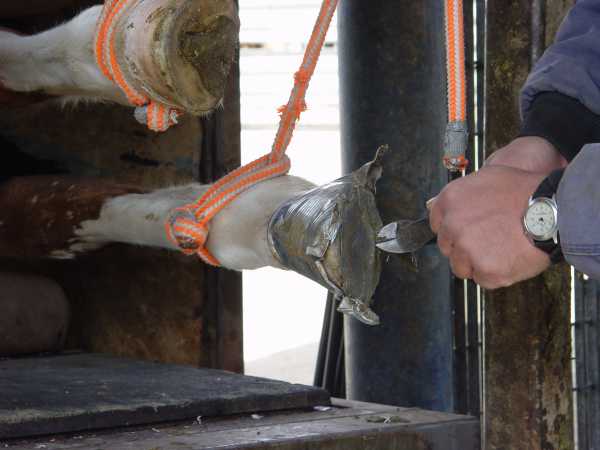
The cut away can.
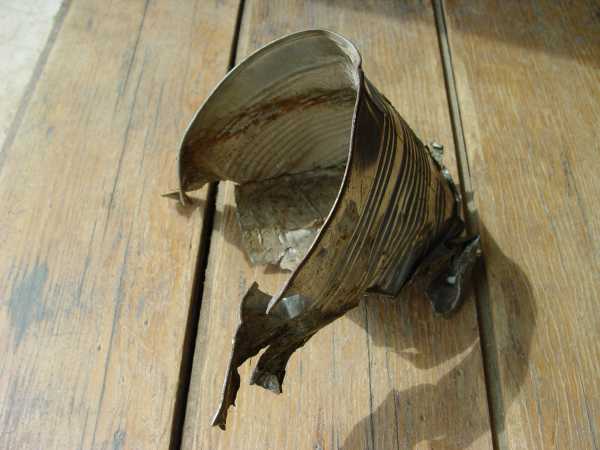
We had left the other two mares in the round corral in hopes that the band would stay in the area. Sure enough, they were only a couple hundred yards away. The stallion and the other horses became animated when the mare called out to them from the trailer.
The band stallion prancing around.
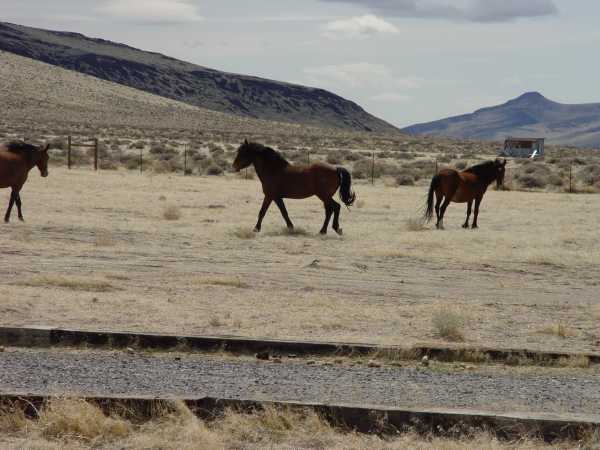
We released the "rescued" mare and the other two horses at the same time, and they trotted off to rejoin their band.
The mare (behind) catches up to her companions.
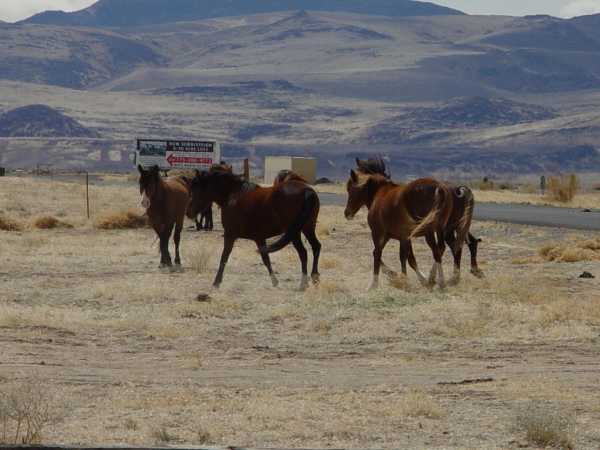
| 








